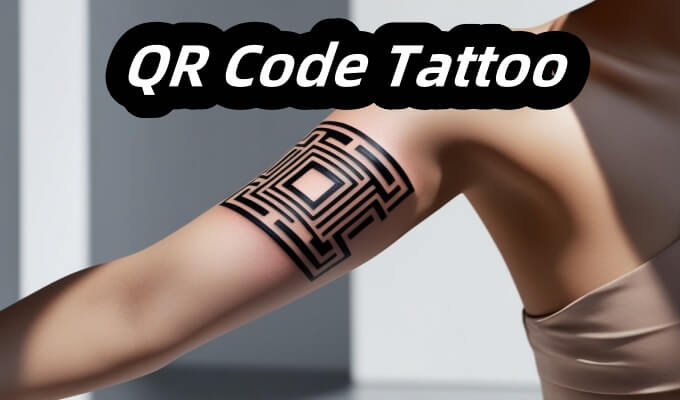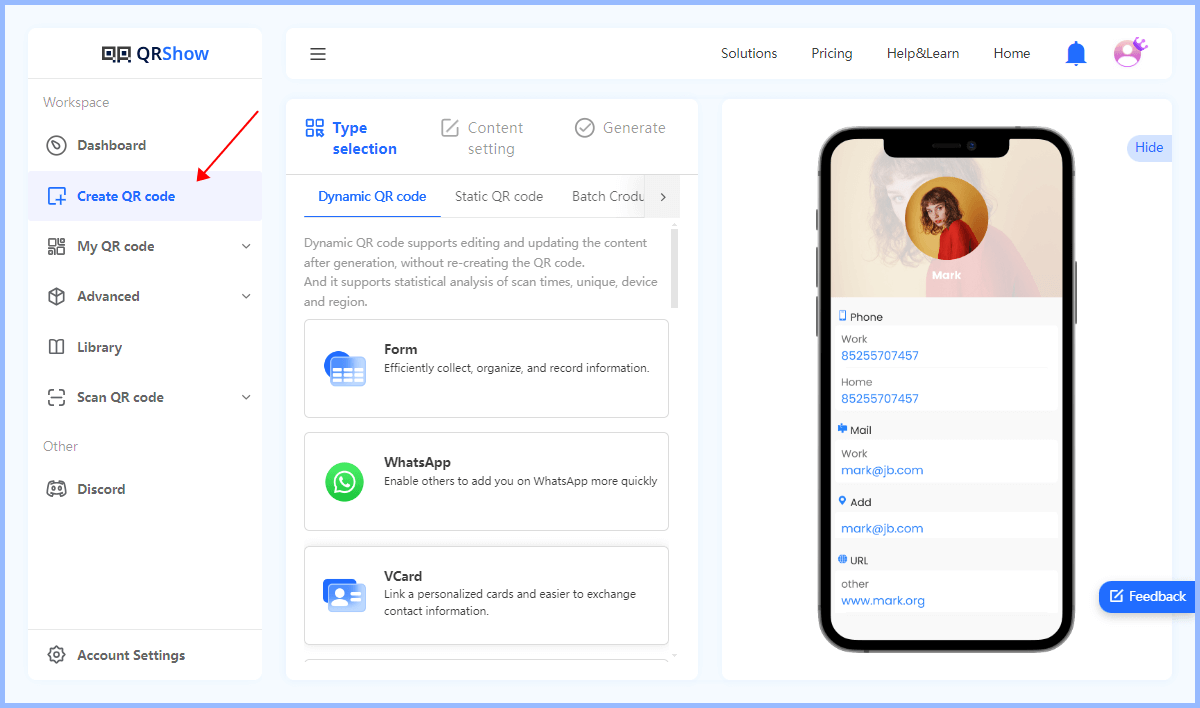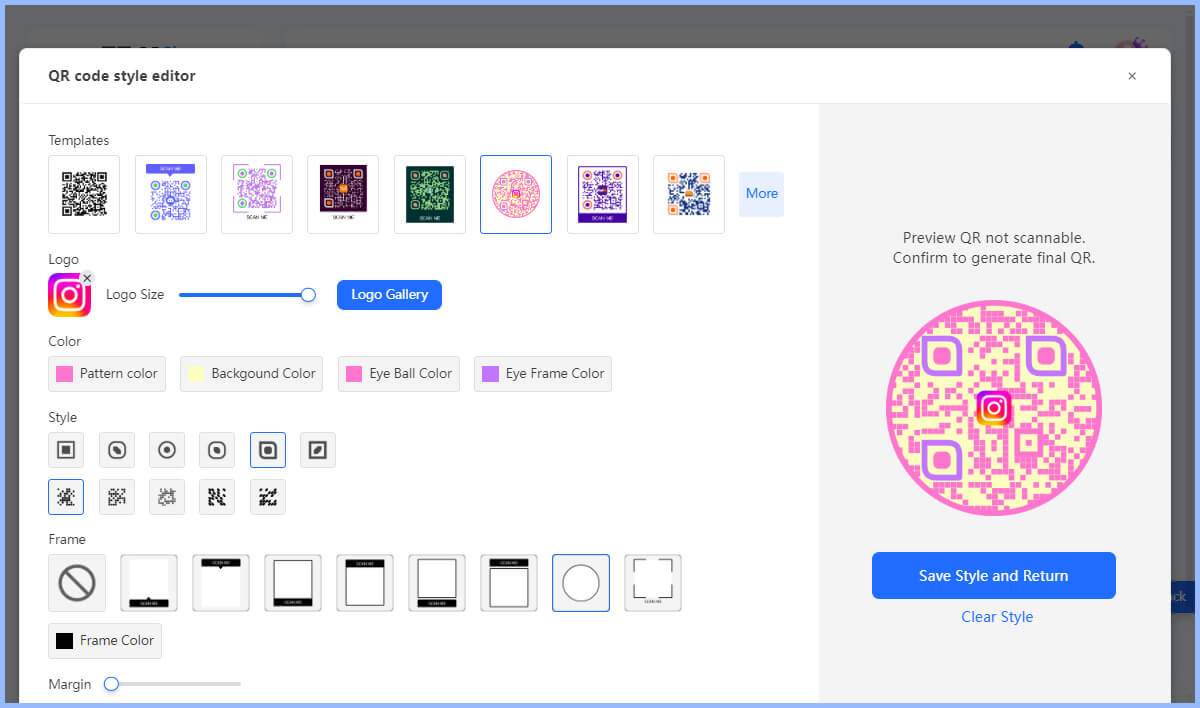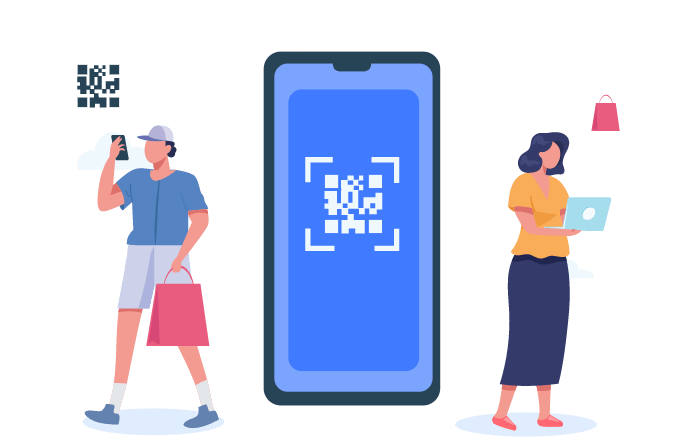In the realm of body art, self-expression knows no bounds, and a new trend has emerged that seamlessly merges the physical and digital worlds. Enter the fascinating world of QR code tattoos – a fusion of art and technology. QR code tattoos have attracted attention for their ability to store and share personal data, links, and even multimedia content.
In this article, we will delve into the fascinating world of QR code tattoos and explore their origins, meanings, and the endless possibilities they offer. Buckle up and get ready to be mesmerized by the charm of QR code tattoos.

Part 1. What Is a QR Code Tattoo?
QR code tattoos are a unique form of body art that combines technology with self-expression. It involves a quick response (QR) code tattooed on the skin that can be scanned with a smartphone or other device to access digital information. These tattoos can be permanent tattoos or temporary tattoo patches.
QR code tattoos function similarly to traditional QR codes. When scanned with a smartphone camera or a QR code reader app, they redirect the user to a specific digital destination. This could be a website, social media profile, audio file, video, or even a PDF document, among other things.
Part 2. Types of QR Codes for Tattoos
There are two main types of QR codes, and the ones that can be used for tattoos are:
1. Static QR Codes
Static QR codes can be created for free using a variety of QR code generators. However, the information embedded in a static QR code is permanent and cannot be changed once the tattoo is applied. This means that the digital content associated with the tattoo will never change.
2. Dynamic QR Codes
Dynamic QR codes are more advanced and offer greater flexibility. Dynamic QR codes allow the linked content to be updated and changed, even after the tattoo has been inked. This means that the information embedded in the QR code can be modified at any time, making it a more versatile option for those who want to keep the content of their tattoo up to date or changeable.
View also: Compare Static and Dynamic QR Codes in Detail
Part 3. How to Create Your QR Code Tattoo
Want to start creating a QR code tattoo right away? QRShow QR Code Generator allows you to create QR codes for a variety of content, including websites, social media profiles, contact information, or any other digital content.
- Customize the look of your tattoo QR code, including color, shape, adding a logo or image, etc.
- Create different types of QR code tattoos, including: text, videos, pictures, etc.
- Allow users to download the QR code in high-resolution formats (such as PNG or SVG) to ensure the tattoo is clear and scannable.
- Track the scan data of your tattoo QR code, including scan location, number of times, etc.
Below are step-by-step instructions to guide you through the creation of a QR code tattoo:
Step 1: Open your web browser and go to the QRShow QR Code Generator page.
Step 2: Click "Create QR Code" and select the type of QR code you want to create.

Step 3: Enter the relevant information based on the QR code type you selected.
(Optional): Customizing the QR code makes your tattoo more beautiful, you can change the color, add a logo, or adjust the shape, etc.

Step 4: Click the "Generate" button to create your QR code.
Step 5: Scan the QR code with your smartphone or a QR code scanner app, making sure it points to the right content.
Step 6: Download the QR code image to your device. Make sure to choose a high-resolution format (such as PNG or SVG) for better tattoo quality.

Step 7: Next you can give the downloaded QR code image to a professional tattoo artist, or make a temporary tattoo sticker.
Part 4. Where to Place Your QR Code Tattoo
When considering where to place your QR code tattoo, you must consider QR code scannability and personal preference. Here are some recommended tattoo locations:
1. Forearm
2. Wrist
3. Back of neck
4. Upper arm
5. Chest
6. Ankle or calf
Part 5. Things to Note about QR Code Tattoos
1. Size and Placement Considerations
The size and placement of a QR code tattoo are key factors in its functionality and beauty. To ensure scannability, tattoos should be at least 2x2 inches. Larger designs generally work better because they are clearer and less likely to deform over time. Also, it is crucial to choose a relatively flat area of the body when it comes to placement.
Before inking, it is important to thoroughly test the QR code design. Use your mobile phone to scan the QR code to confirm its functionality. This step helps to identify any potential issues before the design becomes permanent.
3. Choose the Right QR Code Content
Since tattoos are permanent, if you choose a static QR code, link the QR code to content that is unlikely to change, such as a personal website or digital portfolio. Alternatively, you may consider trying a dynamic QR code so that you can update the linked content without changing the tattoo.
4. Post-Care and Maintenance
Proper post-care is essential for the healing and durability of your QR code tattoo. Your tattoo artist will provide specific instructions,
Final Thought
QR code tattoos are a bold and modern choice that combines art with technology. They offer a unique way to share information and express your personality. However, issues such as the difficulty of scanning as the tattoo ages and the need to keep the linked content updated are worth considering. Ultimately, whether to get a QR code tattoo comes down to personal preference, weighing the cool factor and practical uses against the long-term commitment and potential drawbacks.









Rated Successfully!
You have already rated this article!